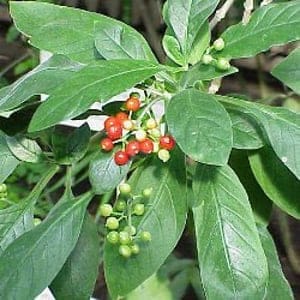
Ipecacuanha
Latin name: Cephaëlis ipecacuanha
Short name: Ipecac
Common name: Ipecac | Ipecacuanha Root | Brazilian Root | Vomiting Root | Matapulga
Primary miasm: Psoric Secondary miasm(s): Sycotic
Kingdom: Plants
Family: Rubiaceae
- Symptomatology
- Remedy Information
- Differentiation & Application
Derived from the dried root of the tropical shrub Cephaëlis ipecacuanha, native to Brazil and South America. Contains the alkaloid emetine, known for its strong emetic and expectorant properties.
Traditionally used to induce vomiting in poisoning cases; also used in small doses to treat coughs and respiratory tract infections.
Proved by Hahnemann and published in Materia Medica Pura. Further insights by Allen, Hering, and Boenninghausen.
- Stomach – persistent nausea, vomiting
- Respiratory system – spasmodic cough, asthma, mucus accumulation
- Gastrointestinal tract – colic, diarrhoea with nausea
- Uterus – post-partum haemorrhage, nausea in pregnancy
- Tongue and mouth – clean tongue with severe gastric symptoms
- Circulation – haemorrhagic tendencies with bright red blood
- Open air
- Resting still (sometimes)
- Loosening clothing
- Slight pressure on the stomach (temporary)
- Cold drinks (sometimes, during nausea)
- Warmth and heat (especially warm rooms)
- Motion of any kind
- Eating (especially rich or fatty food)
- Smell of food
- Lying down
- Suppressed eruptions
- Nux vomica – More irritable; nausea relieved by vomiting; tongue coated
- Antimonium tart. – Rattling chest, great weakness, but with more sleepiness
- Phosphorus – Nausea with thirst for cold drinks; anxiety and burning
- Arsenicum – Restlessness, thirst, vomiting, more chill and fear
- Veratrum album – Profuse vomiting and cold sweat; great collapse
- Complementary: Arnica (after injury with nausea), Belladonna, China
- Antidotes: Nux vomica, Arsenicum
- Follows well: Aconite, Antimonium tart.
- Precedes well: Phosphorus, Pulsatilla
Ipecacuanha embodies unrelenting nausea—a state where the stomach revolts, but the system finds no relief. This remedy’s genius lies in its application to acute conditions with spasmodic expulsive efforts, be they vomiting, coughing, bleeding, or convulsions. The patient is sensitive, silent, and pale—often passive but suffering intensely. It shines in paediatric cases, respiratory illness with mucus retention, and obstetric emergencies with haemorrhage and faintness.
- Think of Ipecac when vomiting does not relieve nausea
- Essential in infantile bronchiolitis with rattling cough and no expectoration
- Useful in nausea of pregnancy and post-partum haemorrhage
- Cough that ends in vomiting is a classic indication
- Responds well to early stage of whooping cough, especially in children
Stomach
- Nausea, constant, not relieved by vomiting
- Vomiting, of bile, mucus, blood
- Clean tongue with gastric symptoms
Chest
- Cough, spasmodic, ends in vomiting
- Cough, with suffocation
- Asthma, with gagging and nausea
Female
- Menses, excessive, bright red blood
- Nausea during pregnancy
- Haemorrhage after delivery, with faintness
Mind
- Irritability during nausea
- Weeping, children, without cause
Fever
- Chill with nausea
- Cold sweat with faintness
Samuel Hahnemann – Materia Medica Pura: Original proving; persistent nausea and vomiting
James Tyler Kent – Lectures on Homoeopathic Materia Medica: Mental state, clean tongue, obstetric indications
John Henry Clarke – Dictionary of Practical Materia Medica: Confirmed gastric and haemorrhagic tendencies
William Boericke – Pocket Manual of Homoeopathic Materia Medica: Asthma, bronchitis, and spasmodic cough
C. Hering – Guiding Symptoms of Our Materia Medica: Violent spasms, uterine bleeding, paediatric focus
